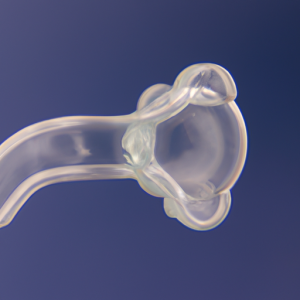Maintaining good oral health is crucial for overall wellbeing, but sometimes dental issues arise that require restoration. From cavities to cracked teeth, these problems can cause discomfort and affect one’s ability to eat and speak properly. In this article, we will delve into the world of dental restoration, exploring the diagnosis and treatment process, as well as the symptoms and causes of dental issues that may require restoration. Additionally, we will discuss the latest techniques and innovations in dental restoration, highlighting how modern dentistry is revolutionizing the field. Whether you are a dental professional or someone experiencing dental problems, this article aims to provide valuable insights into the world of dental restoration.
1. Understanding Dental Restoration: The Diagnosis and Treatment Process
Understanding Dental Restoration: The Diagnosis and Treatment Process
Dental restoration is a crucial aspect of maintaining oral health and ensuring a beautiful smile. It involves the diagnosis and treatment of various dental issues such as cavities, tooth decay, and damaged or missing teeth. This process not only restores the function and aesthetics of the teeth but also enhances overall oral well-being.
The diagnosis of dental restoration begins with a comprehensive examination by a dentist. During this initial assessment, the dentist evaluates the patient’s dental history, conducts a visual examination, and may recommend further diagnostic tests. These tests may include dental X-rays, which help identify hidden dental problems such as cavities between teeth or under the gum line.
Once the diagnosis is complete, the dentist will discuss the treatment options with the patient. The choice of treatment depends on the severity of the dental condition and the patient’s preferences. Common dental restoration treatments include fillings, crowns, bridges, implants, and dentures.
For minor dental issues like cavities, fillings are often the preferred treatment. The dentist removes the decayed portion of the tooth and fills it with a durable material such as composite resin or amalgam. This not only prevents the cavity from worsening but also restores the tooth’s shape and functionality.
In cases where the tooth is extensively damaged or weakened, a crown may be recommended. A crown is a custom-made cap that covers the entire tooth, providing strength and protection. It is typically made from materials such as porcelain, metal, or a combination of both, ensuring a natural appearance and long-lasting results.
When a patient is missing one or more teeth, bridges, implants, or dentures may be considered for dental restoration. Dental bridges are used to fill the gap between missing teeth by attaching artificial teeth to the adjacent natural teeth. Implants, on the other hand, involve the surgical placement of artificial tooth
2. Recognizing the Symptoms and Causes of Dental Issues Requiring Restoration
Dental issues can range from minor cavities to more severe conditions that require extensive restoration. Recognizing the symptoms and causes of dental problems is crucial in identifying the need for restorative treatment and seeking prompt dental care. By understanding these signs and underlying causes, individuals can take proactive steps to maintain their oral health and prevent further damage.
One of the most common symptoms of dental problems is tooth pain or sensitivity. Persistent toothaches or discomfort while biting and chewing can indicate tooth decay, infection, or even gum disease. Additionally, sensitivity to hot or cold food and drinks may suggest weakened enamel or exposed tooth roots. These symptoms should not be ignored as they often indicate the need for dental restoration.
Another symptom that may require dental restoration is tooth discoloration. Teeth that appear yellowish, brownish, or develop dark spots might be affected by decay or enamel erosion. Discoloration can also result from certain medications, excessive consumption of staining substances like coffee or tobacco, or aging. Regardless of the cause, dental restoration can help improve the appearance and functionality of discolored teeth.
Damaged or broken teeth are also clear indications for dental restoration. Fractured, chipped, or missing teeth can result from accidents, trauma, or even excessive teeth grinding. These issues not only affect the aesthetic appeal of the smile but can also impact proper biting and chewing. Dental restoration treatments, such as dental crowns, bridges, or implants, can effectively restore the structure, function, and appearance of damaged teeth.
Furthermore, gum disease, also known as periodontal disease, can lead to the need for dental restoration. Symptoms of gum disease include swollen, red, or bleeding gums, persistent bad breath, and loose teeth. If left untreated, gum disease can progress, causing gum recession, bone loss, and eventually tooth loss. Dental restoration procedures like root scaling and plan
3. Exploring Modern Techniques and Innovations in Dental Restoration
Modern dentistry has seen significant advancements in techniques and innovations for dental restoration. These advancements have revolutionized the way dental professionals diagnose, treat, and prevent oral health issues. With the integration of cutting-edge technology and improved materials, patients now have access to more efficient, comfortable, and aesthetically pleasing dental restoration procedures.
One of the most notable modern techniques in dental restoration is the use of digital imaging and computer-aided design and manufacturing (CAD/CAM). This technology allows dentists to create highly accurate 3D images of a patient’s teeth and gums. By using these images, dentists can plan and design precise restorations, such as crowns, bridges, or dental implants. CAD/CAM systems also enable the fabrication of these restorations in a single dental visit, eliminating the need for multiple appointments and temporary restorations.
Another innovative technique in dental restoration is the use of laser technology. Lasers have become an indispensable tool in various dental procedures, including gum reshaping, removal of decayed or damaged tissue, and teeth whitening. Laser technology offers several advantages over traditional methods, such as reduced bleeding, less pain, and faster healing time. Additionally, lasers promote better precision and accuracy, allowing dentists to preserve more healthy tooth structure during cavity preparation or gum treatments.
In recent years, dental materials have also undergone significant advancements, leading to more durable and natural-looking restorations. Tooth-colored composite resins have become a popular alternative to traditional amalgam fillings. These resin materials can be matched to the color of the natural tooth, providing a seamless and esthetically pleasing result. Additionally, advancements in ceramic materials have made it possible to create highly durable and lifelike dental crowns and veneers. These restorations mimic the properties of natural teeth, resulting in improved functionality and aesthetics.
Furthermore, dental

